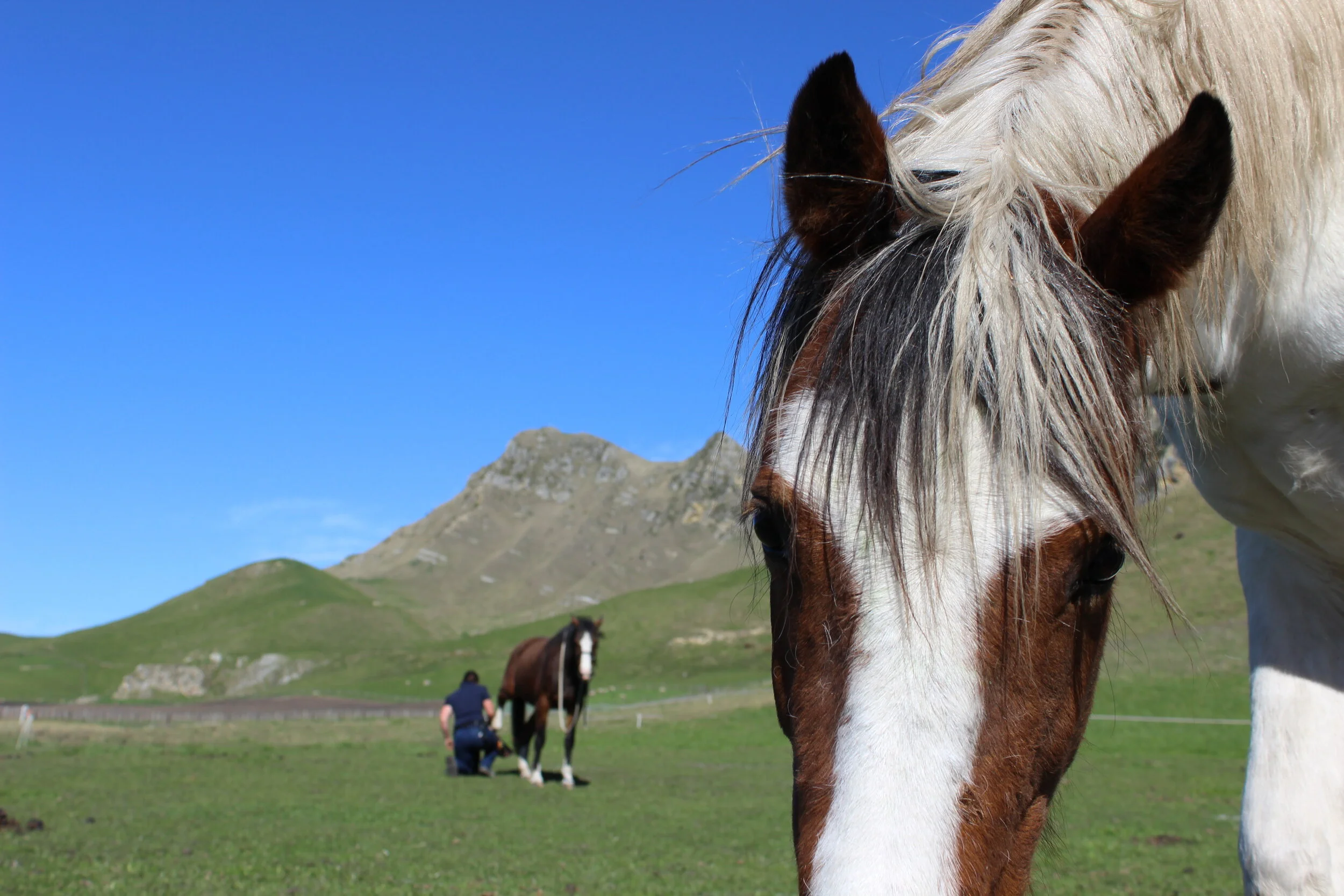Making the decision to transition your horses to barefoot is a big one - it’s not just taking off the shoes, its a change in lifestyle.
And the motivation to switch to barefoot is different for different people and horses. Some decide that shoes may not actually be necessary, or are looking to keep their horse’s more naturally. It might be that you are seeing some early warning signs of how shoes are affecting your horse’s hooves and body, you’re concerned about the concussion of steel on hard ground, or you are having soundness issues with your horse that are not being resolved with shoeing.
Once you have decided to go “barefoot” (this could mean a transition from shoes, or a transition to a different way of trimming), it pays to do some research, find a qualified professional who’s philosophies ring true for you (never be afraid to ask someone what their qualifications are and discuss their views of hoofcare), and then make a plan before you “pull the shoes”.
Keeping and riding a barefoot horse is not the same as a shod horse. There will likely be two transitions to make; taking off the shoes and developing comfortable, functional hooves, and then adjusting how you ride your horse. For example, if you have been heavily reliant on shoes and studs for traction, you and your horse will need to find new balance. You will also need to make adjustments to your horse’s lifestyle, your involvement in their hoof care, and how you protect their feet.
Without shoes we get to see how the horse really feels on his feet, steel shoes can cover up some lameness’s - the key there is cover up, they usually don’t solve the issue. So when you take the shoes off you are going to see how truly sound your horse is.
There is the initial “shock” of taking the shoes off, if your just took your running shoes off and tried to run down the road you’d probably feel it too! If this tenderness happens, it usually shows up the day after the shoes come off, and lasts for a few days. Then, we work long term to build stronger, sounder feet for your horse.
Each horse is different in their transition time, although I can usually predict which horses are likely to go sore and which will be fine, you never really know until the shoes come off. But horses with hoof distortions, thin soles, thrush or poor hoof development usually find transition harder. These are the horses that need a change in hoofcare the most, and we don’t just take the shoes off and make them tough it out, we make a plan and use alternative hoof protection to keep them as comfortable as possible.
The level of work that your horse will be able to do is down to the individual. Many will be able to wear hoof boots and do the same level of work, others may need to have their work load reduced, some may need time out. Rehab cases can take a lot of work and care, working on the horses hooves, diet and lifestyle to keep them as comfortable as possible.
Points to consider for success
Choose the right time to take off your horses shoes; a time when you are not planning to do too much work with your horse and when the ground is not too hard is best.
Make diet changes a couple of months before shoe removal. This may include supplementation and grass management.
Low grade laminitis can be masked by shoes, but will become very obvious when we take them off! So reducing any potential inflammation before transition is very helpful.
Start treating thrush and other pathologies before removing the shoes. Thrush makes frogs and soles soft and sensitive.
Where possible, I like to remove the shoes at the end of your horses shoeing cycle, and then do a conservative trim. In cases of very weak, brittle, thin or broken hooves, this is not always possible, so immediate hoof protection will be needed.
Have hoof boots ready, or be prepared to apply hoof protection such as casting or hoof armour.


